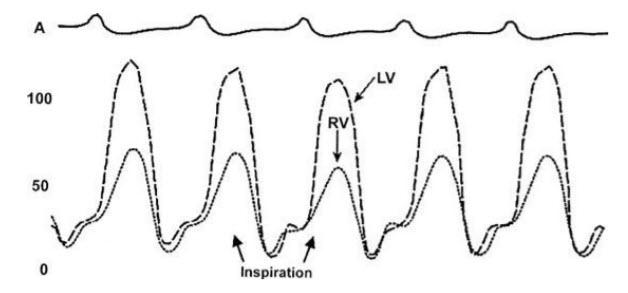Question 22#
A 73-year-old man with no cardiac history presents with chronic lower extremities edema. His primary care physician attributed his symptoms to old age. He was treated with hydrochlorothiazide. Initially, he reported a good response to the therapy, but, over the past few months, his edema recurred, and doubling the diuretic dose did not alleviate his symptoms. On his initial examination, you notice distended neck veins and a quiet precordium. He has mild hepatomegaly and 4+ pedal edema. A TTE is suboptimal because of the patient’s inability to lie flat and obstructive lung disease. His blood work is as follows:
- White blood cell count = 6,000
- Hemoglobin = 12.7
- Platelets = 225,000
- Urea = 43
- Creatinine = 2.4
- Albumin = 3.6
A cardiac catheterization is performed. He has normal coronary arteries with mild impairment in LV systolic function. The tracings from the study are shown in Figure below.

What is your explanation of his symptoms?
A. You agree with his primary care physician. You tell the patient that he probably has peripheral venous insufficiencyB. This patient has significant diastolic dysfunction, and his prognosis is guarded
C. This patient’s symptoms are due to the LV systolic dysfunction and volume overload
D. This patient should be referred for surgical evaluation for possible pericardial stripping
Correct Answer is B
Comment:
This patient has significant diastolic dysfunction, and his prognosis is guarded. He has evidence of restrictive LV filling (advanced diastolic dysfunction) in the absence of CAD. The differential diagnosis in his age group includes amyloidosis (especially considering concomitant renal dysfunction), hemochromatosis, and other infiltrative processes.